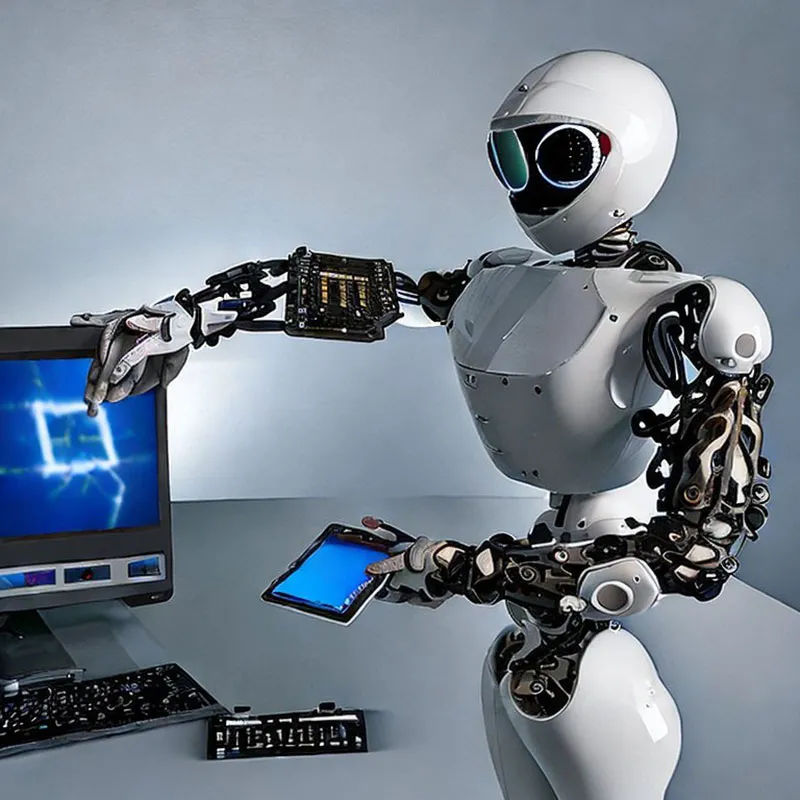Computer hardware encompasses the tangible components of a computer that can be physically touched and observed, in contrast to software, which cannot be seen or touched directly, but rather manifests its actions visually. The synergy between hardware and software constitutes a computer system, without which a computer cannot operate. The central processing unit (CPU), often referred to as the “processor or CPU”, stands as its principal component, determining efficiency.
Virtually every task, from downloading, uploading, browsing webpages, printing, etc. relies on the CPU for execution. The complexity and capacity of computers vary based on the effectiveness and efficiency of the CPU. In addition to the CPU, there exists an alternative processing unit such as the graphical processing unit (GPU), capable of handling tasks concurrently mainly for processing images and videos, unlike the CPU’s sequential processing for general task, Tensor Processing Unit (TPU) specialized for AI operations, data processing unit (DPU) specialized for data processing especially data compression and encryption, among others.
The processors significantly influence the pricing of computers, with variations ranging from single to multiple CPUs or GPUs or TPUs or DPUs, numbering up to millions.
For example, the PC we see around mostly have a single physical CPU or CPU with additional GPU. However, there are computers that have a cluster of 3, 4, 5, and up to millions CPUs or GPUs or TPUs. Intel, Nvidia, AMD and Google are the key players in processor manufacturing. Intel and AMD are known for CPU, Nvidia is known for GPU and Google are known for TPU. These processors are produced in various versions, each with distinct capabilities, specializations, and efficiencies. This serves as a brief introduction to computer processors, aiding readers in understanding them within the context of crypto mining.
Crypto mining involves miners (users) generating new versions of coins by solving complex mathematical problems on a computer network and subjecting the coins to verification on the blockchain. These mining operations are executed on computer systems with high configurations having diverse processor speeds and capabilities; consuming significant amounts of energy.
Miners receive newly minted coins as a reward for their successful creation of these new coin versions, incentivizing (profits) their efforts in the crypto mining process. The new version of the coin serves as proof that the miner or user has completed a work commonly referred to as proof-of-work.
The processor integrated into these computers significantly influences the profitability of crypto-mining operations. During the initial stages of crypto’s emergence, general-purpose CPUs served as the primary platform for crypto mining operations. However, as mining operations grew increasingly intricate and dynamic, manufacturers began producing processors specifically tailored for crypto mining.
These specialised processors were designed to deliver superior profitability compared to general-purpose CPUs, reflecting the evolving demands of the crypto-mining landscape. For instance, it was estimated that the mining power of a single GPU is equivalent to the mining power of almost thirty CPUs. Therefore, the GPU enjoyed favoured status over CPUs among crypto miners, who find it more profitable to mine crypto using GPU-equipped computers rather than those with CPUs. Consequently, the demand for GPU systems soared, driving up their costs significantly.
However, as miner focus shifted away from GPU systems, demand for GPUs diminished, causing prices to plummet back to normal levels in the market. Field Programmable Gated Array (FPGA) later emerged with superior mining power and low power consumption compared to GPUs.
In 2019, FPGAs were estimated to yield $12/day profit triggering miners to switch to the FPGAs. When mining Qubic currency, utilising a computer equipped with an AMD Zen 4 CPU results in superior profits compared to other processors.
According to Wccftech’s report, the AMD Zen 4 CPU has proven to be highly profitable for mining Qubic currency. Consequently, crypto miners swiftly flocked to acquire the AMD Zen 4 CPU, seeking to maximize their profits through mining operations. This surge in demand has resulted in a rapid depletion of available AMD Zen 4 CPUs from the market due to extensive mining activities by crypto miners. Thus, making the MD Zen 4 CPUs to be expensive and scarce in the market.
Before the rise of the CPU Ryzen 9 7950X, the CPU RXT 4090 held the title of the most profitable CPU in crypto mining circles, garnering intense demand akin to a “hot cake” among cake customers. However, with the advent of the Ryzen 9 7950X, boasting superior profitability over the RXT 4090, attention swiftly shifted in the crypto mining community. Miners eagerly embraced the Ryzen 9 7950X to optimize their profits, ultimately forsaking the once-dominant CPU RXT 4090.
Currently, the heightened demand from crypto miners for the Ryzen 9 7950X has caused its prices to skyrocket and led to it being out of stock in many online retailers. China has banned the CPU RXT 4090 from its boundaries. Within a span of 24 hours, crypto miners can accumulate over $2 in earnings by mining with the Ryzen 9 7950X, surpassing the profitability of mining on the RTX 4090 and Nvidia GPU.
An alternative processor known as the application-specific integrated circuit (ASICs) is specifically engineered for executing crypto-mining operations. ASICs are customized to target particular crypto algorithms, such as SHA-256 for Bitcoin mining and Ethash for Ethereum mining. Renowned for their efficiency, ASICs have become favourites among crypto miners, as they offer superior returns on investment compared to general-purpose CPUs. However, the ASICs costumed chip is difficult or even impossible to be repurposed for other tasks.
Profiting from the crypto mining operations is beyond the monitoring of the price fluctuations, the computer processor has a direct impact on the profitability. As more miners join, the mining process becomes increasingly difficult, requiring greater computing power to cope with increasing volume of data and difficulty level.
Chiroma, professor of Artificial Intelligence, University of Hafr Al Batin, Saudi Arabia, [email protected]

 Join Daily Trust WhatsApp Community For Quick Access To News and Happenings Around You.
Join Daily Trust WhatsApp Community For Quick Access To News and Happenings Around You.


